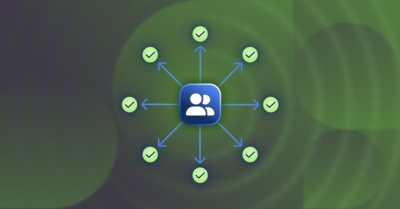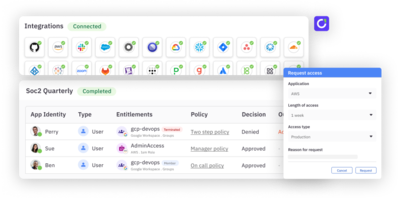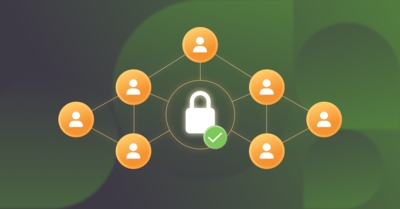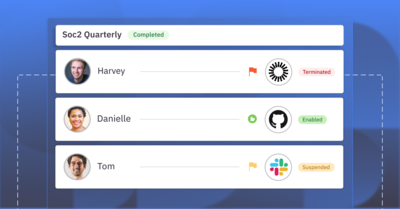How To Successfully Implement an Identity Lifecycle Management Program
For modern enterprises, the strategic imperative to automate the identity lifecycle management (ILM) process is clear. The security, efficiency, and compliance benefits are well-understood. However, the path from strategic intent to a successful, operational program can be complex. Many organizations find that their ILM initiatives stall, exceed budgets, or fail to deliver their intended value due to unforeseen architectural and organizational hurdles.
This guide provides a practical framework for technology and security leaders to navigate the implementation process successfully. We will begin by outlining the most common challenges that derail ILM projects and then present a clear, 7-step framework for a successful implementation, from initial planning and data preparation to driving adoption and measuring long-term success.
Common Identity Lifecycle Management Implementation Challenges to Anticipate
A successful ILM implementation requires navigating a series of predictable but significant challenges. Anticipating these challenges is a critical step in developing a strategy that avoids common pitfalls and ensures the program delivers on its strategic objectives.
Lack of clear governance and ownership
The most common reason ILM initiatives stall is a failure to establish clear governance from the outset. Without a defined owner for identity data, application access, and the ILM tool or platform itself, the project quickly becomes deadlocked by competing priorities and an inability to make critical policy decisions.
According to PMI, a lack of clear goals and active executive sponsorship is a primary contributor to project failure. [*] An ILM program without a cross-functional steering committee to drive it forward is likely to suffer the same fate.
Related → What is Access Governance? Defined & Explained
Poor data quality in source systems
Automation is entirely dependent on the quality of the data it consumes. The principle of “garbage in, garbage out” is the fundamental technical challenge for any ILM project. If the authoritative source of truth—typically the human resources information system (HRIS)—contains inaccurate or inconsistent data, the automation will fail.
⚠️Example: If job titles are not standardized (“VP of Sales” vs. “Sales Vice President”) or the “manager” attribute for an employee is not reliably populated, it becomes impossible to build accurate role-based provisioning rules, leading to countless errors and manual exceptions.
Integration complexity with legacy systems
While connecting to modern SaaS applications has become relatively straightforward, most enterprises still operate in a hybrid environment. Legacy, on-premise, and custom-built applications often lack modern integration capabilities, creating technical and financial hurdles.
Overly ambitious initial scope
A frequent mistake is attempting to automate every identity, for every application, all at once. This “boil the ocean” approach creates an impossibly large and complex initial project, dramatically increasing the risk of failure. The pursuit of a perfect, all-encompassing Day 1 deployment often prevents the achievement of a valuable, phased rollout.
Resistance to organizational change
An ILM implementation is as much a human challenge as it is a technical one. It fundamentally changes how managers approve access and how IT administrators perform their daily tasks. Without a deliberate change management strategy, this can lead to resistance, poor adoption, and users creating workarounds that bypass the new system, negating its security and efficiency benefits.
6 guiding principles for a successful ILM implementation
A successful identity lifecycle management program is built on a foundation of strategic principles that guide everything from initial planning to long-term operation.
1. Be objective-driven, not technology-driven
A common mistake is to treat an ILM implementation as a purely technical upgrade. For success, the program must be framed as a business initiative designed to achieve specific, measurable goals.
Before evaluating any technology, you must first define your primary business driver—whether it’s reducing security risk, increasing operational efficiency, or improving the employee experience—as this will guide all subsequent decisions.
💡Pro tip: Turn your primary objective into a single, measurable statement. For example: “Reduce the time-to-deprovision for all departing high-risk employees to under one hour within the first 60 days of go-live.” This creates a clear, executive-level success metric.
2. Establish a cross-functional governance framework
An ILM program fundamentally changes how the organization operates, making a strong governance structure a prerequisite for success. It is a business program, not just an IT project.
Success requires a dedicated governance structure with executive sponsorship and clearly defined ownership across IT, Security, HR, and key business units to make and enforce policy decisions.
💡Pro tip: Designate a single, executive-level project owner who has the authority to break down silos between departments. Their primary role is to ensure the project stays aligned with the business objectives and to remove organizational roadblocks.
3. Prioritize data hygiene as a prerequisite
Automation is entirely dependent on high-quality, reliable data. The “garbage in, garbage out” principle is the most critical technical challenge for any ILM project. Before you can automate workflows, you must identify your authoritative sources of truth and ensure the data within them is accurate.
4. Embed a Zero Trust mindset into your design
An effective ILM program doesn’t just automate old processes; it builds security in by design. Every workflow, like joiner-mover-leaver, should be architected with the principle of least privilege as the default state. This proactive approach of designing for security first is far more effective than trying to apply controls after the fact.
💡Pro tip: When designing a “joiner” workflow, start with a baseline of zero access. Then, only add the specific, role-based “birthright” permissions that are absolutely necessary for that user’s function on Day 1. All additional or privileged access should require a separate, time-bound request.
Related → A Practical Approach to Achieving Zero Standing Privileges (ZSP)
5. Automate in phases, starting with the highest risk
Avoid a “big bang” implementation that attempts to automate everything at once, as this creates an impossibly large project and increases the risk of failure. A phased rollout that prioritizes workflows based on business impact is the most effective strategy for delivering quick wins and building momentum for the program.
💡Pro tip: The most successful implementations often automate the leaver (offboarding) process first. It delivers the most significant security risk reduction by eliminating orphaned accounts and provides a clear, immediate win for the security team.
6. Architect for future scale and complexity
Your ILM strategy must be flexible enough to adapt to future challenges, particularly the explosive growth of non-human and AI-driven identities. A rigid system that is only designed to handle today’s employees and contractors will quickly become technical debt.
💡Pro tip: Prioritize ILM platforms with an API-first architecture and a flexible data model. This ensures you can easily integrate with future applications and extend governance to new types of digital identities without being locked into an outdated system that cannot evolve with your business.
Putting your ILM strategy into action with ConductorOne
A successful identity lifecycle management program requires a platform that is as agile and forward-thinking as the principles that guide it. Legacy tools and custom scripting often create friction, making it difficult to implement a truly modern, automated, and secure ILM strategy.
ConductorOne is the agentic identity platform designed to bridge the gap between your strategic goals and your technical reality. Our architecture is built to solve the core challenges of modern identity, helping you implement a best-practice program.
- Achieve phased automation with speed: Our no-code, user-friendly platform allows your team to build and deploy your most critical workflows—like the high-risk “leaver” process—in days, not months, delivering immediate security value.
- Plan for the future, not just today: ConductorOne is built on a flexible, API-first architecture designed for hyper-integration. It connects to your entire application estate and is ready to govern the future of identity, including your growing population of non-human and AI agents.
- Embed governance in your workflows: Our platform provides the tools to establish and enforce your governance framework, with centralized policy management, clear approval chains for exceptions, and a comprehensive audit trail for every action.
- Drive adoption through a superior experience: We ensure your ILM program succeeds by making it easy to use. With a self-service portal integrated directly into tools like Slack, we deliver a user-friendly experience that encourages adoption, not workarounds.
Stop building brittle, custom solutions and start orchestrating your identity lifecycle with a modern platform built for today’s challenges.
To learn more about ConductorOne, book a demo.
ILM implementation FAQs
What are the key metrics (KPIs) to track to measure the ROI of our ILM program?
To measure the success and justify the investment of your ILM program post-implementation, you should track KPIs that are directly tied to your initial business objectives. The most critical metrics include:
- Time-to-deprovision (in hours): This is your primary metric for risk reduction.
- Time-to-provision (in hours/days): This measures the impact on new employee productivity and time-to-value.
- Volume of manual access-related help desk tickets: This directly quantifies the reduction in operational overhead and measures efficiency gains.
- Audit preparation time (in days): This tracks the improvement in compliance efficiency and the reduction in manual effort for your teams.
How long does a typical ILM implementation take?
The timeline depends heavily on the scope and complexity of your environment. However, a modern, phased approach can deliver value very quickly. With a modern platform, a high-impact initial phase, such as automating the offboarding process for your most critical applications, can often be completed in 30 to 90 days.
A comprehensive, enterprise-wide program that includes hundreds of applications and complex legacy system integrations is a longer-term strategic initiative that can take 6-12 months or more. The key is to prioritize quick time-to-value.
Who is the first person we should hire or assign to lead an ILM program?
While technical expertise is crucial, the biggest initial challenges are often organizational. Your first dedicated resource should be a program manager or product owner with strong cross-functional leadership skills. This individual’s primary role will be to coordinate between HR, IT, Security, and business leaders; define the project scope and objectives; and ensure the program stays on track. A strong program lead who can navigate the organization is essential before you dive deep into the technical architecture.




